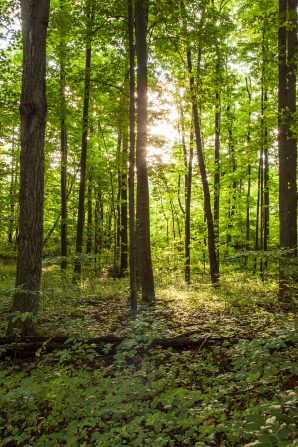
I just arrived this afternoon from Tel Aviv and Paris, and have, frankly, spent too much time since then in a state of profound but very pleasant unconsciousness. But it seems that I’m under vigorous attack somewhere as having lied (in the 31 May 2018 Deseret News column that I just now reposted) about accounts of Joseph Smith’s First Vision.
In the demonology of certain critics of the Church of Jesus Christ of Latter-day Saints — especially of a relative handful of embittered apostates, who cheer each other on in such things — accusations of dishonesty are commonly the weapon of first resort; disagreement with their view of disputed topics must rest, ultimately, on either ignorance or, where a claim of ignorance is implausible, on deliberate deception. I suppose that I should be flattered that I typically fall into the latter category. (The very first email that I received upon landing at the Salt Lake City airport today announced that my integrity is now in doubt because of my stance on the First Vision — as if, in such circles, I had ever been considered to possess a shred of integrity in the first place.)
My (latest) crime against decency, honesty, and truth is my assertion, in that year-old column for the Deseret News, that believing Latter-day Saint scholars and leaders have known about, and have openly spoken and written about, the various First Vision accounts for at least fifty years.
However, I stand by that assertion, and here are just four examples of the evidence on which I would rely to defend it:
Paul R. Cheesman, “An analysis of the Accounts Relating Joseph Smith’s Early Visions” (Master’s Thesis, Brigham Young University 1965).
This thesis contained the first publication of the 1832 account.
James B. Allen, “The Significance of Joseph Smith’s ’First Vision’ in Mormon Thought.” Dialogue: A Journal of Mormon Thought, Vol. 1 No. 3 (1966): 29–46.
Dean C. Jessee, “The Early Accounts of Joseph Smith’s First Vision,” Brigham Young University Studies, Vol. 9 (Spring 1969): 275-94.
This article contains the text of the 1832, Cowdery 1834, Nov. 9,1835, November 14, 1835, 1838, and 1842 (Wentworth) versions.
James B. Allen, “Eight Contemporary Accounts of Joseph Smith’s First Vision. What do we learn from them?” Improvement Era 73.4 (April 1970): 4-13.
In addition to the article itself, a chart appears comparing the following versions: 1832, 1835, 1838, Pratt 1840, Hyde 1842, Wentworth, NY Spectator 1843, Neibaur 1843.
Milton V. Backman, Jr., Joseph Smith’s First Vision. The First Vision in its Historical Context (Bookcraft 1971; 2nd edition, revised and enlarged 1980)
For further information, see
I’m also being branded a liar because of my declaration, in that 31 May 2018 Deseret News column, that there’s been no scandal and no suppression of the variant accounts of the First Vision.
I stand by that statement, as well — and particularly when referring to the past fifty years.
Is it possible that Elder Joseph Fielding Smith, who headed up the then very small and non-professional office of the Church Historian and Recorder from 1921-1970 — a position that never in those days entailed the production of academic historiography — “sat on” one or more unpublished First Vision accounts? Yes, it is. I’ve heard some assertions to that effect, but I no longer recall the details, such as they were, and I would need to research a bit to be sure of the facts (if, indeed, it is possible to be so). Since the mid- to late 1960s, however — which is to say, just as I said, for the past fifty years — there can be no serious, plausible claim that the Church has suppressed the non-canonical accounts of the First Vision.
The background is important: Really solid academic historical writing in the Church can only really be said to have begun to flourish with the rapid expansion of Brigham Young University following World War Two and with the founding of BYU Studies in 1959, of the Mormon History Association in 1965, and of Dialogue: A Journal of Mormon Thought in 1966. Younger people today probably don’t realize how sparse the venues were, and how rare the relevant scholars were, in the much smaller and more rural and poorer Church of the 1930s, 1940s, and 1950s. Once trained scholars were available and outlets existed for sharing their research, things began to take off.












